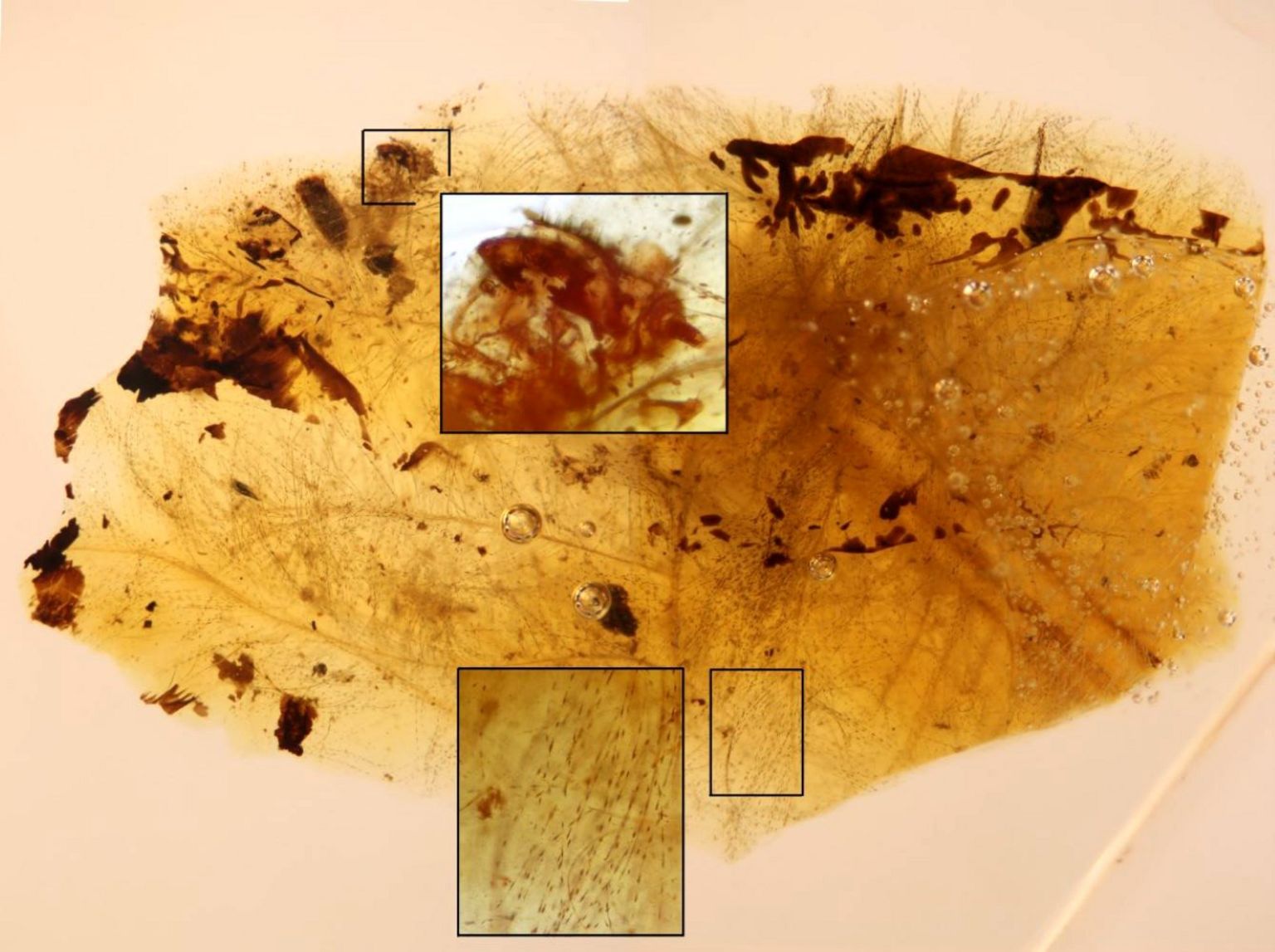Dinosaurs: Fossils suggest beetles may have fed on dino feathers
- Published
- comments

Researchers found the fossils in amber fragments
Fossils have been discovered which suggest that ancient beetles fed on the feathers of dinosaurs more than 105 million-years-ago.
The fossils were found in bits of amber - which is formed when a sticky substance from a tree is left to harden over millions of years and then starts to turn yellow.
The amber contained the shed skin of small beetle larvae tightly surrounded by bits of downy feathers.
Researchers say the feathers belonged to an unknown theropod dinosaur - which is a group of dinosaurs that had three toes and claws on each arm and includes the famous Tyrannosaurus Rex.
Is this what a feathered T Rex looked like?
Lead author of the research, Dr Enrique Penalver, from the Spanish National Research Council, said: "This is hard evidence that the fossil beetles almost certainly fed on the feathers and that these were detached from its host."
The researchers believe the beetles most likely lived in piles of feathers that had been shed by a dinosaur.
One such pile - possibly a dinosaur nest - must have been close to a resin producing tree, with a flow of resin capturing the feathers and beetles, preserving them for millions of years.
Researchers found that the shed skin of beetle larvae which was found in the amber was related to modern skin beetles, or dermestids.
According to researchers, modern dermestids also play a key role in the recycling of organic matter in the natural environment, commonly living in nests of birds and mammals, where feathers, hair, or skin build up.
However researchers don't think the beetles were a nuisance to the dinosaurs, in fact they haven't ruled out that they benefitted from them feeding on their detached feathers.
Experts are certain that the feathers belonged to dinos and not to modern birds because that group appeared about 30-million-years later in the fossil record.
If you can't see the quiz at this top of this page, click here.
- Published13 June 2022
- Published31 March 2023
- Published17 February 2023
